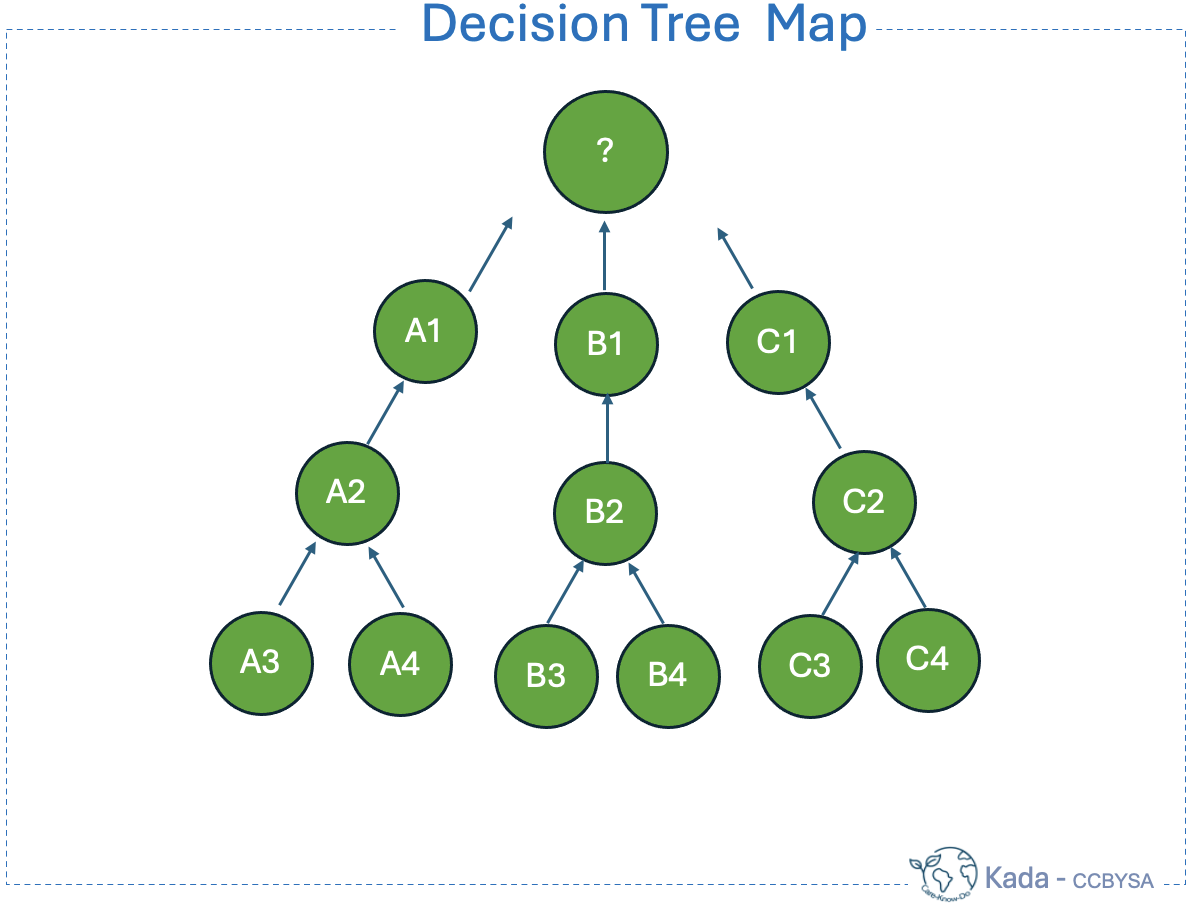Decision Trees/Analysis Mapping is a knowledge cartography technique developed by Ross Quinlan in the 1980s. Useful tool for evaluating situations where there are multiple choices with uncertain outcomes; applied to various fields such as computer science, statistics, and artificial intelligence developed by Ross Quinlan in the 1980s. Decision Trees Analysis Map supports learners to evaluate situations with multiple potential outcomes and choose the best course of action.

It is useful for decision-making processes and predicting outcomes in uncertain scenarios.
How can we create a Decision Trees Analysis Map?
- Identify the decision to be made at the root.
- Outline possible actions and branches from the root.
- Assign probabilities to each branch where possible.
- Attach outcomes and their values at the end of branches.
- Calculate expected values to aid in decision-making.
- Choose the path with the highest expected value or desired outcome.
Decision Trees Analysis Maps can help students to structure complex decision-making processes.
The application of Decision Trees Analysis Maps is broad, including fields like computer science, statistics, and artificial intelligence.
Our studies about Decision Trees Analysis Maps using AI map application indicate increased efficiency in evaluating and comparing multiple decision paths as one of the main advantages.